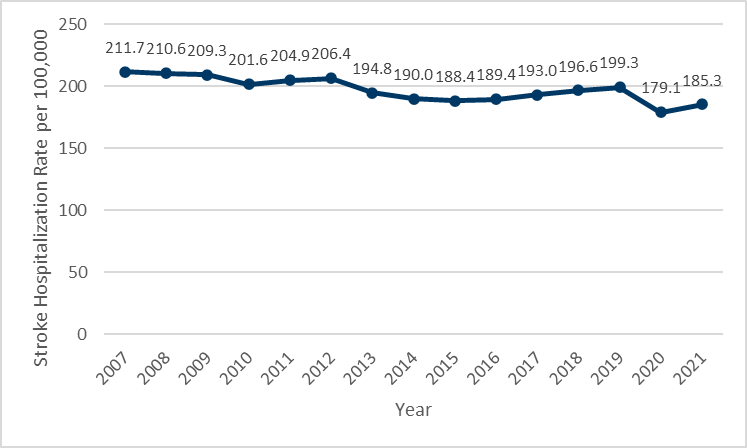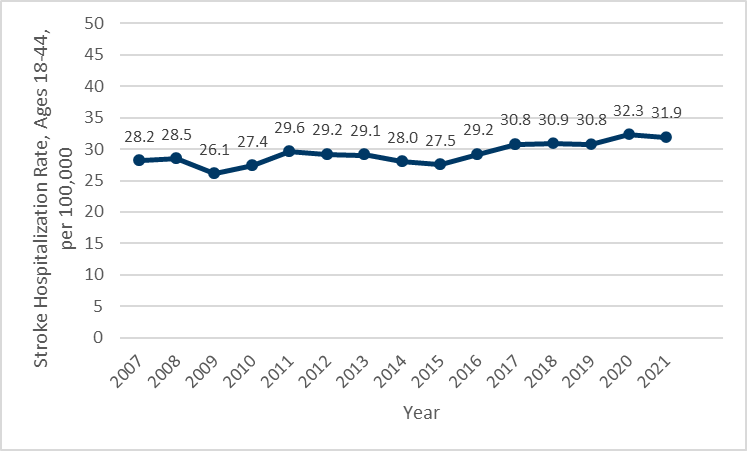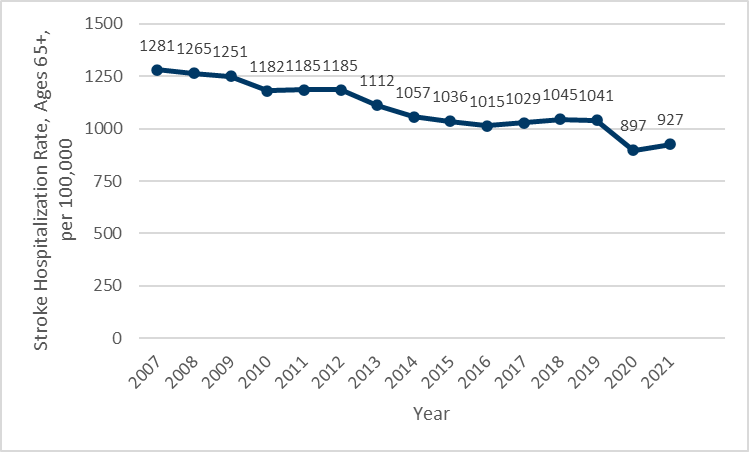Cardiovascular Health
- Cardiovascular Health Home
- CVH Data and Trends
- CVH Programs & Resources
- Minnesota 2035 Plan
- Minnesota Stroke Program
- About Us
Learn More
Related Topics
Contact Info
Cardiovascular Health Program
Cardiovascular Health Indicator
Measure: Stroke Hospitalization Rate
| Indicator | Date of Most Recent Measure | Current Measure | Trend |
|---|---|---|---|
| Age-Adjusted Hospitalization Rate due to Cerebrovascular Disease (Stroke) | 2021 | 185.3 per 100,000 |
Stable |
Overview
- In 2021, there were just over 12,800 hospitalizations of Minnesotans for stroke, or a rate of 185 hospitalizations per 100,000 people.
- The total number of annual stroke hospitalizations has stayed relatively steady from 2005 through 2015, increased almost 1,800 from 2015 to 2019, and dropped significantly in 2020, the first year of the COVID-19 pandemic. Hospitalizations increased in 2021, back to levels last seen in 2017.
- The lowest stroke hospitalization rate in Minnesota was in 2015; the rate has increased slightly through 2019, before dropping significantly in 2020. It is unclear if these recent changes are a trend or are temporary impacts of the COVID-19 pandemic.
- The long-term decline in stroke hospitalization rates is limited to adults ages 65 and older. Adults younger than 65 have experienced slight increases in hospitalization rates between 2005 and 2019. Young adults ages 18 to 44 continued to see hospitalization rates increase during 2020, the first year of the COVID-19 pandemic.
See Also:
Last Updated: 06/06/2023



